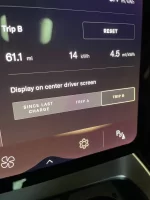- Joined
- Mar 7, 2020
- Messages
- 7,394
- Reaction score
- 10,801
- Location
- Naples, FL
- Cars
- Model S Plaid, Odyssey
- Air DE Number
- 154
- Referral Code
- 033M4EXG
I asked when I took delivery of DE-Performance and was told the motors are different. I have never found anything published by Lucid that confirms this. However, it does make sense there is some component difference as if it were only in software then there would be no reason to have the 2 versions with different EPA numbers. DE-Performance / DE-Range.
Zak Edson, Lucid VP of Sales & Service, told me that the rear motor of the DE used a special metallurgy that was not used elsewhere in the line. He said it produced about 15 more horsepower and a more significant bump up in torque, but he would not disclose that figure or any other details about the differences in the motors.

